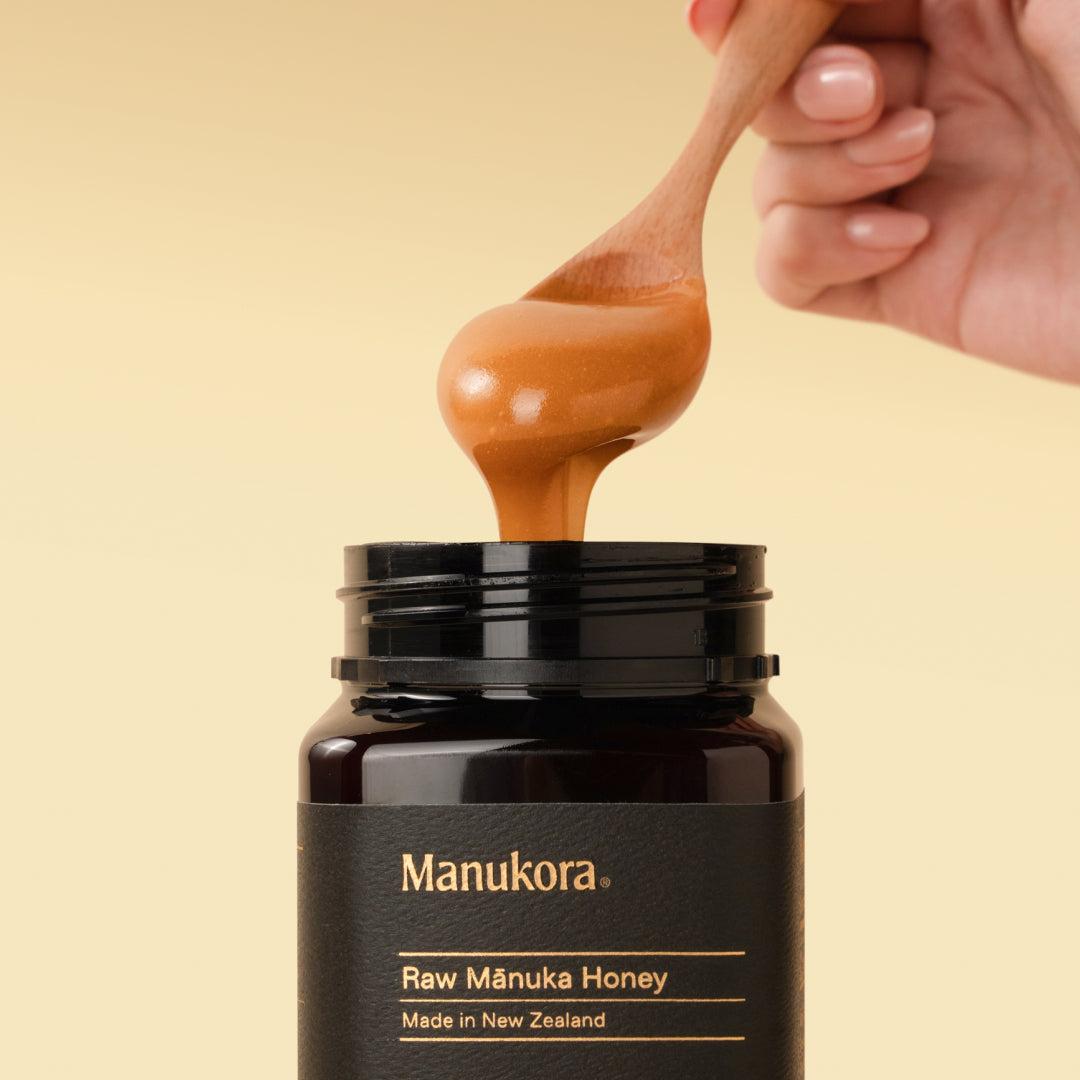Executive Summary:
-
Honey has played a vital role throughout history, valued by civilizations like the Egyptians, Greeks, and Chinese for its symbolism, flavor, and cultural importance.
-
Across religions and mythologies, honey appears as a sacred substance used in rituals, offerings, and texts that highlight its spiritual significance.
-
Traditional uses of honey extended beyond food, from early remedies and beekeeping techniques to seasonal customs and culinary staples.
-
Modern honey production now focuses on quality and sustainability, with global standards ensuring purity, traceability, and ethical treatment of bees preserving honey’s legacy for future generations.
Exploring Honey's Rich History and Cultural Impact
Throughout history, honey has held significant cultural significance, been used as a therapeutic tool, and, of course, added a bit of sweetness to culinary creations.
From the ancient Egyptians, who considered honey a symbol of immortality and power, to its sacred role in Greek mythology as the food of the gods, honey has always held a place of honor. Fossils of honey even date back to over 150 million years ago—with cave paintings from 7000 B.C. showing the first depictions of beekeeping.
It’s undeniable: Honey has a vast and rich history. It’s no wonder we often refer to this sweet treat as liquid gold. In many cultures and civilizations, it was even used as a form of currency! So, let’s take a trip into the past. How honey has woven itself into culture, tradition, and daily life and how its story continues today in your own pantry.
Ancient Beginnings
There’s evidence that honey played a significant role in Ancient Egypt, Greece, and China. From Egypt to Greece to China, honey played a role in both daily life and sacred tradition.
Ancient Egyptians Used Honey As a Gift For the Gods
In ancient Egypt, honey was highly respected. In the tombs of pharaohs, jars of it were placed in the tombs of pharaohs as offerings for the afterlife, reflecting its long-lasting nature and cultural value.Archaeologists have uncovered honey in burial chambers that had been sealed for centuries , still preserved.
Honey was also used in embalming rituals and as a common ingredient in food preparation. Its use in everyday life and spiritual practice highlights just how deeply it was woven into Egyptian culture.
Honey Had An Invaluable Role in Greek Mythology
The Greeks held honey in high regard, linking it to mythological figures like Artemis and Demeter. It was said to be part of ambrosia, the mythical food of the gods.
Greek scholars such as Aristotle and Hippocrates wrote about honey, noting its uses in early wellness practices. It was also widely enjoyed in meals like spread on bread, used in sweets, or added to wine. Fragments of pottery suggest organized beekeeping was common, showing just how important honey was to Greek life and economy.
So, how do we know the Greeks valued this yummy indulgence as much as we do today? Well, there are various records indicating the findings of pottery fragments. These fragments held evidence of apiaries (where beehives are kept), suggesting the significance of beekeeping in their society.
Honey Was Considered a Sacred Energy in Ancient China
In China, honey has been used for centuries and is mentioned in one of the oldest herbology texts, the Shen Nong Ben Cao Jing. It was appreciated for helping to maintain balance and harmony within the body’s natural systems.
Honey appeared in early culinary traditions and was often included in tea or tonics. Its smooth flavor and natural origin made it a valuable part of traditional Chinese culture.
From pharaohs to philosophers, honey has long been honored not just as food but as a symbol of life, health, and tradition.
Honey in Mythology and Religion
Throughout history, honey has been woven into the myths and sacred texts of many cultures. Often seen as a symbol of life, sweetness, and divine connection, honey’s presence in religious and spiritual traditions speaks to its timeless value.
In Greek Mythology
In Greek stories, honey was often linked to the gods. It appeared as a key ingredient in ambrosia, the mythical food said to grant immortality. The gods were frequently described as enjoying honey, reinforcing its image as a sacred and rare substance.
In Hindu Traditions
In Hinduism, honey holds deep symbolic meaning. It is one of the five sacred elixirs , or “Panchamrita,” used in religious rituals, alongside milk, yogurt, ghee, and sugar. These ingredients represent purity, nourishment, and prosperity, and honey’s natural sweetness reflects the blessings of life and spiritual growth.
In Christianity
In Christian traditions, honey frequently appears in the Bible as a symbol of good fortune and prosperity. The Promised Land was often referred to as the "land flowing with milk and honey," denoting its fertility and abundance. It signifies sweetness and richness, both materially and spiritually.
In Islamic Culture
Islamic texts also reference honey for its healing properties, as mentioned in the Quran, where it is described as a remedy from heaven.
This aligns with the broader theme in many cultures that view honey as a gift from the divine, capable of healing both the body and soul. And if you know honey, you likely can attest to this exact value!
Across beliefs and borders, honey has been cherished as a symbol of purity, sweetness, and the divine.
Traditional Uses of Honey
Long before modern kitchens and commercial farming, honey played a meaningful role in daily life n valued for its medicinal properties, culinary applications, and ceremonial significance.
In Ancient Remedies and Folk Practices
Across different regions, honey became part of long-standing traditional health practices. In India, honey has been featured in Ayurvedic texts for centuries, often blended with herbs and used to help maintain digestive balance. In rural parts of Eastern Europe, folk remedies included honey mixed with herbs or warm liquids as part of seasonal wellness routines.
Even without scientific understanding, people recognized honey’s ability to stay fresh and support the body, valuing it as a natural pantry essential long before refrigeration existed.
In Early Cooking and Flavor Traditions
Honey was often the original sweetener before refined sugar became common. In ancient Rome, it was used in glazes for meats and mixed into fermented drinks. In Persia and surrounding regions, honey lent its depth to layered pastries and fruit-based dishes.
In some Scandinavian traditions, honey was combined with berries and grains to create nutrient-rich meals during the colder months bringing both flavor and energy to the table.
In Rituals and Seasonal Customs
Cultural rituals often included honey as a symbol of new beginnings or offerings of goodwill. In Jewish homes during Rosh Hashanah, apples dipped in honey welcome a sweet year ahead. In parts of Eastern Europe and the Baltics, honey was set on altars or shared during seasonal festivals as a symbol of the harvest.
In Beekeeping Traditions
How people raised bees often reflected their landscape. In Greece, woven hives called skeps were crafted from straw. In rural Kenya, beekeepers suspended log hives high in the trees to protect them from animals. In Northern Japan, small boxes carved from local wood became the traditional home for native bee species.
These unique beekeeping methods show just how resourceful communities were in caring for their bees and how deeply integrated honey was in daily life.
From carved wooden hives to seasonal desserts, honey has always adapted to the hands and hearts of the people who cherish it.
Honey in the Modern World
As time moved forward, honey continued to evolve in its meaning and use. In medieval Europe, it became the key ingredient in mead, an early fermented drink enjoyed by all classes. Meanwhile, in regions across Asia and the Americas, honey remained deeply woven into traditional food, wellness, and ceremonial customs.
Today, honey is still cherished not only for its flavor, but for the natural compounds it contains. Many people include raw honey in their daily routines as a way to support overall well-being, particularly when seeking simple, nature-based choices.
But as honey’s popularity has grown, so has the need to protect the pollinators that make it possible. In recent years, concern about the health of global bee populations has become more urgent. Bees play a key role in pollinating crops and wild plants alike meaning their survival affects much more than just honey production.
Supporting ethical beekeeping, choosing traceable honey, and learning about sustainable practices are small but meaningful steps anyone can take. Because when we care for bees, we help sustain the ecosystems and food systems we all rely on.
Global Standards and Best Practices in Honey Production
Global standards and best practices for honey production are vital for maintaining honey's purity and effectiveness but also for preserving its cultural and historical significance. International standards, set by organizations like the International Honey Commission and the Ministry for Primary Industries (MPI) in New Zealand, focus on various aspects of honey production. These include factors like ethical beekeeping to sustainable harvesting and processing methods.
These standards promote ethical beekeeping, responsible harvesting, and minimal processing. By avoiding harmful additives and preserving the honey’s natural state, producers help ensure that the honey reaching your spoon stays as close to nature as possible.
Quality testing is also a key part of modern honey production. This includes verifying the floral source, checking for contaminants, and ensuring the honey hasn’t been altered or diluted. Traceability and transparency like the kind offered by QR-coded jars are becoming essential for brands that want to build trust and maintain authenticity.
Upholding these standards not only protects honey’s integrity but also preserves its story. When producers follow best practices, they honor honey’s cultural roots and ensure its place in the future as both a cherished ingredient and a meaningful symbol of nature’s generosity.
When honey is made with care, from ethical beekeeping to purity testing, it carries more than flavor. It carries legacy.
The Story Continues
From ancient rituals to modern kitchens, this golden elixir has remained a constant presence, cherished across generations. Today, we hold the responsibility to protect that legacy.
It’s up to us to ensure sustainability and best practices in beekeeping and honey production. More than a sweetener, honey is a cultural symbol, one that connects us to the land, to our past, and to the small yet vital work of bees. And with every spoonful, that story continues.
Sources:
Unlocking the Sweet Secrets of Greek Honey: A Guide to its Rich Flavors and Health Benefits
The Honey Association - History
Traditional and Modern Uses of Natural Honey in Human Diseases: A Review - PMC.
Greek beehive. From Wheler 1682, p. 11. Courtesy Founders' Library, University of Wales, Lampeter.
Panchamrit or Panchamrut Recipe - Binjal's VEG Kitchen
Journal of Halal Life Medicine » Submission » The Benefits of Honey in The Holy Quran
Mead 101: What it is and how to make it


















